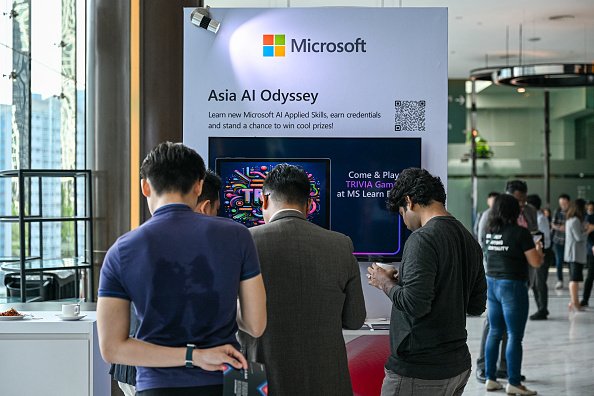Tech Giants Pivot to Southeast Asia as China’s Investment Attraction Wanes
Representatives from Apple, Microsoft, and NVIDIA have met with leaders of Indonesia, Malaysia, and Thailand, and proposed significant investments. China’s political and economic environment is experiencing a decline as geopolitical confrontations with Western countries increase, leading to a shift in foreign investment from China to Southeast Asia. Tech giants like Apple and Microsoft have recently toured Southeast Asia, promising substantial investments in artificial intelligence (AI) and cloud infrastructure in the region.
Targeting Southeast Asia
Over the past few months, tech giants such as Apple, Microsoft, and NVIDIA have visited Southeast Asia, engaging with leaders from countries like Indonesia, Malaysia, and Thailand to put forward large-scale investment plans.
Microsoft CEO Satya Nadella announced an investment of $2.2 billion in Malaysia for the development of cloud and AI infrastructure following visits to Malaysia, Indonesia, and Thailand. This marks Microsoft’s most extensive single investment in Malaysia in 32 years. Additionally, Mr. Nadella announced a $1.7 billion investment in Indonesia last month to provide AI training and job opportunities for 840,000 individuals.
In another development, Amazon revealed its plan to invest an additional $9 billion in Singapore over the next four years to expand its cloud infrastructure.
Meanwhile, Apple has seen a sales decline in China. CEO Tim Cook visited Vietnam, Indonesia, and Singapore in April, meeting with prime ministers and unveiling new investments. Despite a global decrease in total sales, Apple reported record revenue in Indonesia.
Previous plans also include investments by NVIDIA in countries like Vietnam and Malaysia. In 2023, NVIDIA partnered with Malaysia’s YTL Power International BHD to introduce Malaysia’s fastest supercomputer, manufactured by NVIDIA YTL, by mid-2024. YTL announced the deployment of the world’s fastest AI supercomputer in Johor, Malaysia, on March 19, driven by NVIDIA’s Grace Blackwell Superchips to accelerate generative AI development.
According to a report by management consulting firm Kearney, Southeast Asia’s rapid adoption of AI is anticipated to generate $1 trillion in economic growth for the region by 2030.
Rising Middle Class in Southeast Asia
With a population of 678 million, Southeast Asia is among the regions globally with the highest net population growth and a significant young population. The region’s younger generation’s keen interest in video streaming, online shopping, and generative AI has propelled rapid AI development. A report by Google, Temasek, and Bain & Company projected that the local internet-related services market will more than double to $600 billion by 2023.
Southeast Asia also presents a substantial market for electronics and online services, with an estimated 65% of Southeast Asians poised to join the middle class by 2030, bolstering their purchasing power.
Professor Frank Tian Xie from the University of South Carolina Aiken highlighted that as international capital flows into Southeast Asia, the region’s middle class will expand, worker incomes will rise, and technological advancements will ensue.
“Therefore, companies like Apple, NVIDIA, and Microsoft are investing in these countries due to their labor force and emerging middle class,” he stated.
Reasons for Southeast Asia Replacing China: Expert
Henry Wu, a Taiwanese macroeconomics scholar and chief economist at AIA Capital, outlined four main reasons behind the shift of global investment to Southeast Asia.
Firstly, geopolitical factors play a role, with the United States and China viewing Southeast Asia as a critical battleground in their competition. Secondly, the demographic dividend in Southeast Asia offers a competitive labor force compared to China. Middle-class development and economic factors further contribute to Southeast Asia’s appeal for foreign investment.
Mr. Wu emphasized the strategic differences between China and other global powers in Southeast Asia, noting that Chinese investments often aim to circumvent U.S. tariffs by shifting production to Southeast Asia. However, Southeast Asian countries prefer investments from advanced technology and capital-providing countries like Japan, Taiwan, South Korea, the United States, and Europe.
The strategic significance of the South China Sea complicates the CCP’s position, with recent conflicts escalating tensions. The United States considers the region crucial to containing the CCP and strengthening relationships with Southeast Asian countries.




